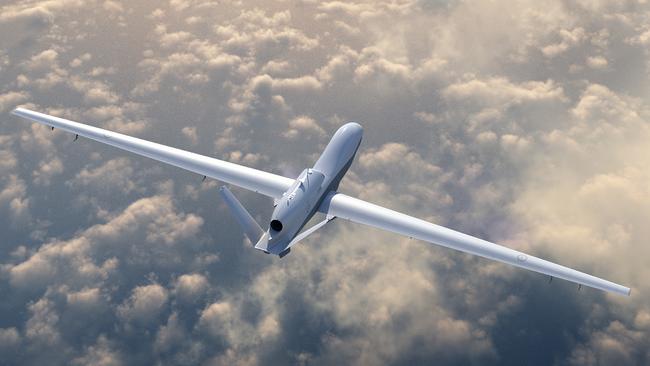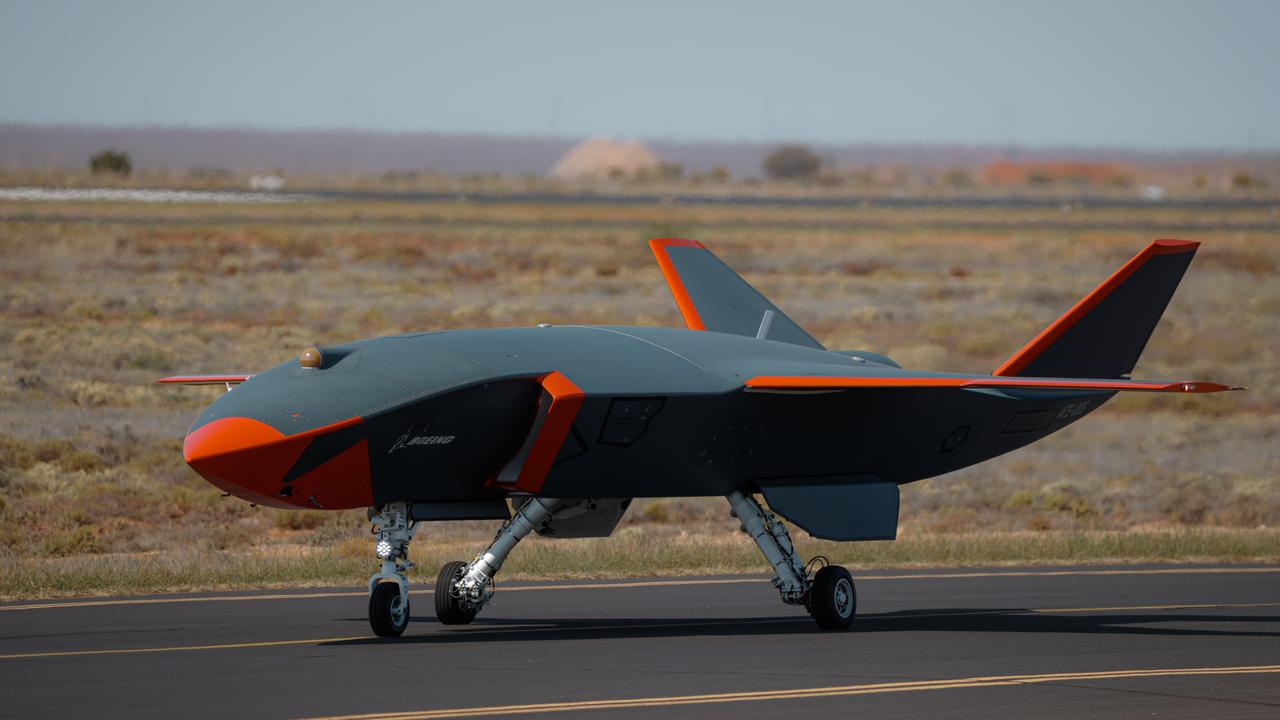Trump budget cut responsible for MQ-4C Triton arrival delay
The RAAF will continue to work towards a remotely piloted persistent maritime surveillance capability in the 2025-2026 time frame, despite a 12-month delay to the arrival of the first aircraft.

The Royal Australian Air Force is continuing to work towards a remotely piloted persistent maritime surveillance capability in the 2025-2026 time frame, despite a 12-month delay to the arrival of the first aircraft.
Defence revealed in late April that the first of at least six Northrop Grumman MQ-4C Triton high-altitude, long-endurance aircraft were being acquired under its $2.5bn Air 7000 Phase 1B program will not arrive in Australia until 2024, a year later than planned, despite being handed over by the US to the commonwealth oln schedule in mid-2023.
The delay stems from removal of Triton production funding from the Trump administration’s US presidential fiscal 2021 budget (PB21) last year, causing a two-year pause in production and sparking concerns within Defence here about the future of the entire program.
These concerns have resulted in the delayed start of major infrastructure works in Australia to support the RAAF aircraft.
“The production pause announced by the US navy to their Triton program in early 2020 resulted in a delay to Defence proceeding to the Public Works Committee in March 2020,” a Defence spokesperson says.
“This has resulted in delays, as Defence works to complete the facilities design process and proceed to Public Works Committee in early 2022. Pending Parliamentary approval of the project, construction is expected to commence by mid-2022.”

The construction work will include working accommodation, operating facilities and supporting engineering services at Edinburgh in South Australia and Tindal in the Northern Territory, as well as hangars, maintenance facilities and aircraft pavement works at the latter.
Despite this, Northrop Grumman has confirmed the first of three Tritons currently under contract for the RAAF will be handed over on schedule in mid-2023.
Defence is now considering options around what it will do with the aircraft until facilities work is completed, including operating for 12 months alongside US navy aircraft in the Pacific region.
The US navy deployed two Tritons to Guam in early 2020 to provide persistent maritime surveillance coverage over the US 7th Fleet’s area of responsibility.
“While all options remain open to support Triton transition into service, to date there has been no change to the decision to base the MQ-4C out of RAAF Base Tindal,” the Defence spokesperson says.
Australia has a requirement for up to seven Tritons, each capable of remaining airborne for up to 24 hours, to maintain two concurrent surveillance “orbits” over vast swathes of the Indian, Pacific or Southern oceans.
The RAAF is part of a co-operative program with the US navy to tailor the Triton’s capabilities to local requirements and will acquire the Multi-Intelligence, or IFC4, variant now under development.
‘The Triton capability is extraordinary and totally matched to the Australian circumstance’
— Chris Deeble, CEO Northrop Grumman Australia
The IFC4 configuration adds additional sensors, including an electronically scanned radar (Multi-Function Active Sensor) and a significant Signals Intelligence (SIGINT) gathering capability.
Although the US navy has subsequently added funding for one Triton, somewhat bridging the two-year gap in production, money to complete IFC4 development is still to be fully reinstated. Despite this, sources close to the US program predict the first flight of a Triton in IFC4 configuration will occur, on-schedule, in the northern summer this year.
At this stage, Defence here is still planning to declare an Initial Operational Capability (IOC) for Air 7000/1B in the 2025-2026 financial year, despite the pressures on the US program.
In April Northrop Grumman celebrated the 20th anniversary of the arrival in Australia of the Triton’s predecessor, the high-altitude, long-endurance RQ-4A Global Hawk, after the first non-stop crossing of the Pacific by a remotely piloted aircraft.
The aircraft, appropriately named Southern Cross II, took part in the Tandem Thrust exercise off the east coast of Australia during its deployment and the experience gained formed the basis for Air 7000/1B.
“Australia’s ability to shape Global Hawk into Triton through the co-operative program has been substantial,” Northrop Grumman Australia chief executive Chris Deeble says.
“The Triton capability is extraordinary and totally matched to the Australian circumstance, probably better matched in some respects than that of any other nation, given the vast areas we have to provide surveillance over and respond to.
“It is also a great opportunity for us to evolve the capability with payloads best matched to the speed of the threat in the future, given the very complex, ambiguous and rapidly changing environment in which we find ourselves here in Australia.”


